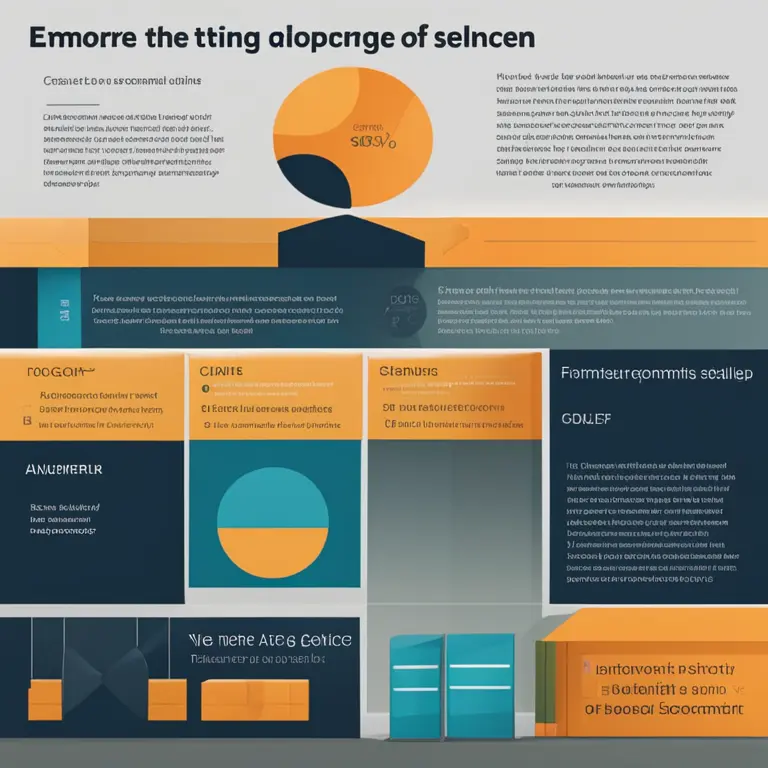
The Art of Thought-Free Meditation
Delve into the profound practice of thought-free meditation to enhance mindful presence and inner peace.
article by Hina Kurosawa
Introduction to Meditation Beyond Thought
Understanding the concept of thought-free meditation involves recognizing the persistent nature of our thoughts and the tranquility that lies beyond them. Conventional meditation techniques often focus on observing thoughts, but thought-free meditation goes a step further—it's the pursuit of a state devoid of the incessant internal chatter. This practice isn't about forcefully silencing the mind but rather finding the space between thoughts where stillness resides. The approach, valuable for those seasoned in mindfulness practices, can unlock deeper levels of inner peace and spiritual connection, fostering a profound quietude within the practitioner.

Foundations of a Thoughtless State
To embark on this journey, it is essential to establish a foundation for your meditation practice. To assist in the transition into a thought-free experience, start with a comfortable and quiet environment, minimizing external distractions. Body posture is also of paramount importance—whether seated cross-legged or in a chair, maintaining a balanced and steady pose encourages a calm mind. Breathing techniques can provide a gateway to tranquility, with equal emphasis on inhalation and exhalation facilitating a harmonious rhythm conducive to easing the mental whirlwind.

Techniques to Minimize Mental Noise
Several techniques can be employed to gently guide the mind away from its natural tendency to wander. One primary method includes focused attention on the breath, the heartbeat, or a singular point in the room. This singular focus acts as an anchor for the mind, helping to minimize extraneous thoughts. Another approach involves visualization—imagining a quiet scene such as a still lake or a silent mountain top can transport the practitioner to a serene headspace. Mantra recitation, either silent or vocal, also serves to occupy the mind with a repetitive sound, steering it away from spontaneous thought generation.

Embracing the Discomfort of Silence
The initial stages of practicing thought-free meditation may be challenging, as individuals often confront a resistance to mental stillness. This discomfort is part of the process and confronting it is essential for growth. Embrace this discomfort; observe without judgment and allow it to dissolve over time. The aim is not to become frustrated or disheartened but to acknowledge the nature of the mind and to persist patiently in the practice. Over time, the intervals of thought-free awareness will naturally lengthen as proficiency in the technique develops.
Gauging Progress in Meditation
Quantifying progress in the realm of thought-free meditation is a subjective endeavor since experiences vary widely among practitioners. Some may encounter fleeting moments of mental quietude quickly, while others take longer to reach similar states. It's important to remember that the quality of the experience is not gauged by the duration of thoughtlessness but by the depth of presence felt during the practice. Keeping a meditation journal can serve as a reflective tool, tracking subtle shifts in consciousness and additional insights that surface during the journey.
Integrating Practice into Daily Life
Ultimately, thought-free meditation's greatest gift is not limited to the moments of practice but extends into everyday life. With sustained practice, the tranquility and mindful awareness cultivated during meditation begin to permeate daily actions and interactions. The stillness achieved through meditation can enhance decision-making, increase emotional resilience, and foster a sense of connectedness with the world around us. Therefore, thought-free meditation is not solely an exercise but also a lifestyle, one that enriches one's existence on multiple levels.
Published: 1/15/2024
Modified: 1/15/2024
More predictions
Come back here soon to learn more about yourself and your future


Calming the Storm: Mindfulness Meditation for Anger
Discover how mindfulness meditation can be a powerful tool for anger management, promoting inner peace and emotional balance.


Mindfulness & Meditation: A Guide for High Schoolers
Discover the benefits of mindfulness meditation tailored for the hectic life of high school students, and learn simple strategies to incorporate it into the daily routine.


Healing Through Mindfulness: Meditation & Trauma Recovery
Mindfulness meditation offers a powerful tool for individuals seeking solace and healing from traumatic experiences. Discover how this practice can aid in the journey towards inner peace.